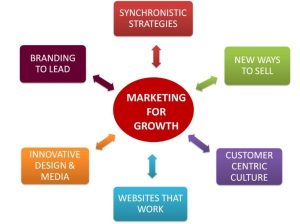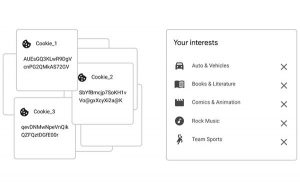I remember watching this video.
I am happy to announce the sale of our Microchip Business, says Mike, the jovial CEO of a global high-tech micro-technology enterprise. The Microchip Business will integrate perfectly with the Mega-Microchip Trader firm, and I have no doubt that it will thrive in its new home. I am excited about the opportunities for the Microchip Business at MMT as well as our own future with a leaner and more focused portfolio.
I know that Mike is genuinely happy – and perhaps a bit relieved – to make this announcement. Yet he sounds neither happy nor excited as he declares that it is so.
This is on my mind after a week when 16 leaders on an Executive Team have taken an Emotional Intelligence tool (the Eqi-2, marvelously helpful assessment) and are having their Debrief chats to review the outcomes. 2 of the 15 sub-scales in this assessment especially resonate with me.
Emotional Self-Awareness: We recognize and understand our own emotions. We are, furthermore, able to differentiate the nuances between various emotions we experience and understand the cause of these emotions. We also note the impact that these emotions have on our thoughts and actions as well as those of others.
Emotional Self-Expression: We openly express our feelings verbally or non-verbally to others.
If you are tuned out of your own emotions, you will be poor at reading them in other people.“
Daniel Goleman, Author of Emotional Intelligence
I see outcomes where an individual scores high on emotional self-awareness but significantly lower on emotional self-expression. Put simply – you feel frustrated but others don’t know that you are frustrated. You’re angry about a matter and we do not know. You’re excited – and we have no idea that you are.
We have no idea what you’re feeling.
You may have good reasons for hiding what you feel. It may not feel safe to fully express what you feel on a particular team. You may come from a family or culture where emotional self-expression was frowned upon. Or you may fear that if you fully express what you feel, you will lose control.
So what are the benefits to our organizational culture when we emotionally self-express? A formal leader who models emotional self-expression implicitly encourages a culture of open communication. Our team as well as our peers will feel comfortable coming to us with their thoughts, ideas, concerns and apprehensions.
This atmosphere will help us stay connected with our team’s reality during difficult times. We stave off fake conversations or fake commitments.
Note: Make sure to always combine your emotional self-expression with active listening to ensure that your self-expression won’t overwhelm others around you but, instead, invites more honest communication.
If you have read the preceding paragraphs and are thinking, huhm, I probably hold back a lot of what I am feeling and could self-express a little more, consider the following tips.
Look at Me.
Eyes are the gateway to our heart and soul. Looking into someone’s eyes can feel uncomfortably intimate. Receiving another person’s eye contact can create discomfort, as well. Sit in the discomfort. Linger in the eye contact.
And since many of us are communicating via Zoom or other virtual platforms these days, turn on your camera. Look at the camera, not the computer screen as you speak. That is how we “give” eye contact in a virtual medium. Hold the eye contact with the camera.
Animate your face.
This is basic but critical. If you tend be stone-faced, un-stone-face yourself. Smile more. Allow your facial muscles to move as you speak. If this feels a little odd or “not genuine,” try to toss those thoughts. Many folks may experience you as non-genuine when you are stone-faced and your facial muscles DON’T move.
Give yourself permission to jump over your own shadow. Experiment. Allow it to be a little uncomfortable. Chances are, you will quickly receive positive feedback from people who appreciate the more animated you.
Play with vocal dynamics.
Think of this as an outside-in approach. Emphasize keywords a little harder. Mix up your pace. Switch from speaking a little faster to slowing down. Take deliberate pauses. Raise your voice a little, lower it. All of these “technical aspects” of speaking will aid in drawing out whatever emotions you are feeling inside – and they will help us to experience you as a more emotionally connected leader.
Expand your emotional vocabulary.
If you tend to not use emotional language as you speak, try this. Before you attend a meeting, review the agenda for that meeting. Check-in with yourself and note how you feel about the various items on the agenda. Are you apprehensive about some, anxious about others? Concerned, excited, eager, worried?
Jot some of these emotional adjectives down prior to the meeting and commit to weaving them into your comments during the meeting. When you integrate more emotional cues into what you say, your emotional self-expression gets closer to aligning with what you actually feel.
Act as if.
This advice hails from the former acting coach in me. Indulge me. Instead of being overly attached to the idea of “who you are,” have some fun with showing up as a more expressive version of yourself. Think of it like taking on a “public persona” or “acting like” a highly expressive character.
When we don’t self-express a lot, acting as if we were someone who does is the absolutely last thing we want to do. I get it. Don’t worry about being inauthentic. Whenever you take this leap you are merely activating a part of you that you has not activated before. It is all YOU.

I do not suggest you express every emotion. I DO urge you to consider the gap between your emotional self-awareness and the emotional self-expression. The benefits of aligning far outweigh the risks of doing so.
The emotional brain responds to a situation more quickly than the thinking brain.“
Daniel Goleman
Don’t fight the emotional brain. It will do its thing, anyway. Observe and align.
Business & Finance Articles on Business 2 Community
(34)







